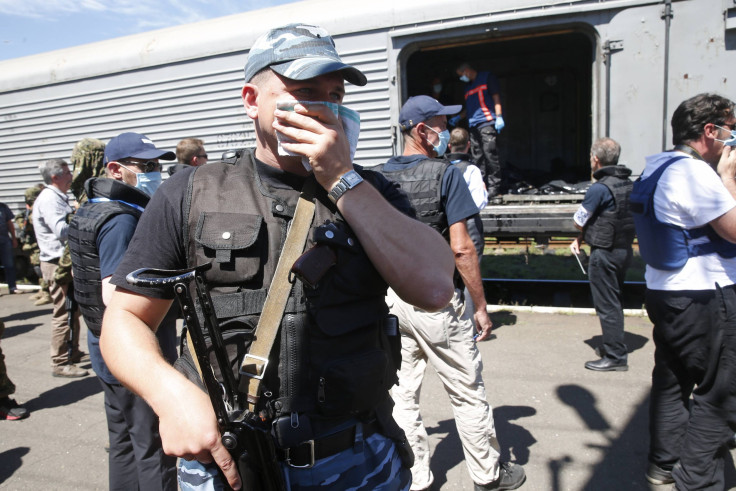Forensic Investigators Preparing To Identify Victims Of MH17 Crash; Dutch Examiners Briefed By Psychologists 'Daily'

Dutch forensic teams are preparing to receive the first of the bodies recovered from the scene of the Malaysia Airlines Flight MH17 crash. The investigators are collecting evidence to help identify the victims and attempting to work with international colleagues to ultimately transport those killed to their final resting places.
Most of the remains recovered so far were taken by refrigerated train from the site of the crash near Torez in the farmlands of Ukraine, to Kharkiv, from where they will then be sent for closer examination to the Netherlands, the country leading the investigation.
Initial reports quoting Kremlin-backed separatists said 282 of the 298 killed were aboard the train Tuesday, but the Dutch medical professionals who received the train told reporters the number was closer to 200. This announcement came at the same time international investigators reported finding more bodies at the crash site. The Organization for Security and Cooperation in Europe also reported finding parts of the plane sawed in half upon inspecting the site and shrapnel damage on the tip of the plane, the best evidence yet that Flight MH17 was taken down by a missile.
Members of Interpol’s Incident Response Team (IRT) started the disaster victim identification (DVI) process in Kharkiv, with some remains labeled and numbered. Of the 10 IRT investigators on the scene, there are three Dutch specialists, four Interpol officials and a Brazilian forensics expert, along with representatives from Europol and the International Commission on Missing Persons.
The 200 bodies currently in Kharkiv are expected to be sent to the Netherlands on either Tuesday night or Wednesday, where they’ll be greeted by Dutch coroners and forensic teams from the United Kingdom, Germany, Belgium, Malaysia and Australia, all countries that lost citizens on the flight last Thursday. The Dutch National Forensic Investigations Team (LTFO) is leading the investigation in the Netherlands, with an estimated 150 police officers, military personnel, forensic dentists, medics and psychologists combing through the small country to help identify the 193 Dutch citizens killed in the crash.
“We have been collecting DNA samples, hair fingerprints, information about scars or tattoos or moles,” from the victims’ close relatives, Jos Van Roo, the LTFO team leader in the Netherlands, told the Wall Street Journal.
Teams have been working from 8 a.m. until past midnight and are staying at hotels near the city of Utrecht without earning extra pay to help with the ongoing effort. Examiners are able to draw on the LTFO’s experience in identifying bodies from the 2004 tsunami, the Turkish Airlines crash in Amsterdam in 2009 and the crash in Tripoli, Libya, but those memories don’t make the gruesome process any easier.
“We get debriefed by a psychologist on a daily basis,” Van Roo told the Journal.
The entire process of identifying the 104 victims killed in the crash of Afriqiyah Airways Flight 771, with which the LTFO was involved, took just 30 days, although that case wasn’t hindered by warring factions.
“Politics make this case so difficult -- with Russia, Ukraine, Ukrainian rebels,” Van Roo said.
© Copyright IBTimes 2025. All rights reserved.




















